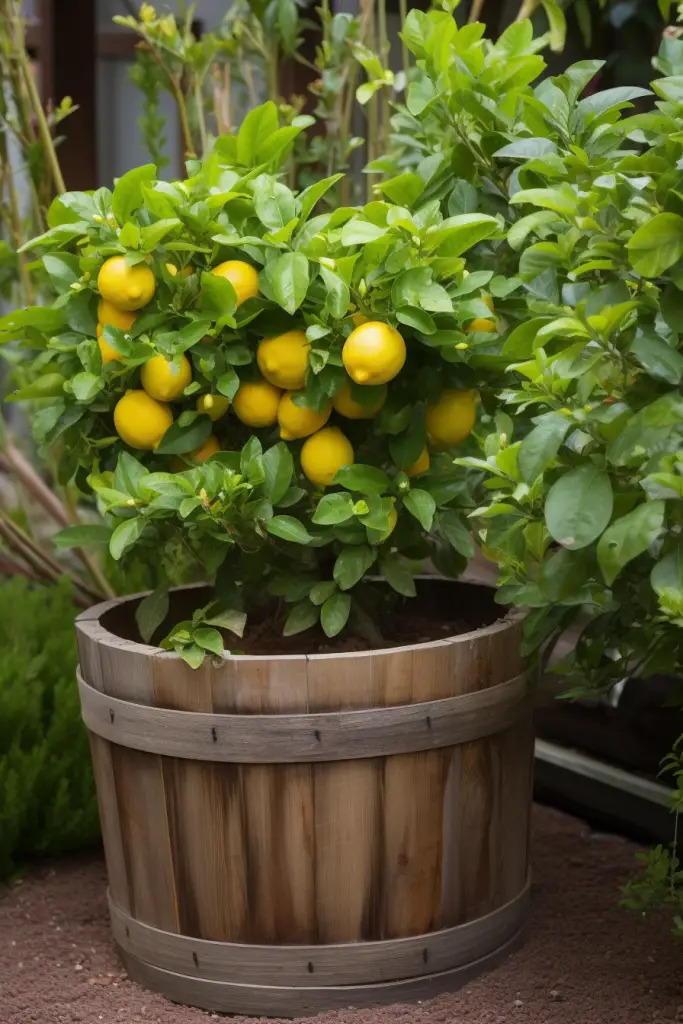9 Tips On Growing A Lemon Tree In A Pot!

Growing a lemon tree in a pot is an excellent way to enjoy the beauty and fragrance of citrus trees, even if you have limited space or live in a colder climate. With the right care and attention, you can successfully cultivate a healthy lemon tree that will provide you with fresh, homegrown lemons. In this article, we will share nine essential tips to help you grow a thriving lemon tree in a pot.
Choose the Right Variety:
Select a lemon tree variety suitable for container cultivation. Dwarf or semi-dwarf varieties such as ‘Improved Meyer’ or ‘Ponderosa’ are ideal since they grow smaller and adapt better to pot environments. Ensure you acquire a healthy young lemon tree from a reputable nursery or garden center.
Select the Perfect Pot:
Pick a large pot with good drainage to prevent waterlogging. Ideally, the pot should be at least 18 to 24 inches in diameter and have drainage holes at the bottom. This allows excess water to escape, preventing root rot.
Soil and Fertilizer:
Use well-draining soil with a pH level between 5.5 and 6.5. A mixture of regular potting soil, sand, and organic compost works well for lemon trees. Fertilize the tree with a citrus-specific slow-release fertilizer according to the package instructions to ensure optimal nutrition.
Positioning and Sunlight:
Place the pot in a location that receives full sunlight for at least six to eight hours a day. Lemon trees require ample sunlight to thrive and produce abundant fruit. If necessary, move the pot outdoors during the warmer months and indoors near a sunny window during winter.
Watering:
Water the lemon tree thoroughly, ensuring the soil is moist but not waterlogged. Allow the top inch of soil to dry before watering again. During the summer, increase watering frequency, and reduce it in winter to prevent overwatering. Always check the moisture levels by sticking your finger about an inch into the soil.
Pruning and Training:
Regular pruning helps shape the lemon tree and encourages healthy growth. Remove any dead, damaged, or diseased branches. Additionally, pinch off new shoots to promote bushier growth. Prune during late winter or early spring before the growing season begins.
Pests and Diseases:
Monitor your lemon tree for pests like aphids, scale insects, or mealybugs. If detected, treat them with organic insecticides or insecticidal soap. Keep an eye out for signs of fungal diseases such as root rot or powdery mildew. Maintaining good airflow around the tree and avoiding overwatering can help prevent such issues.
Temperature and Protection:
Lemon trees are generally sensitive to cold temperatures. When the temperature drops below 50°F (10°C), bring the potted lemon tree indoors or provide adequate protection with frost covers. Protect the tree from strong winds as they can damage branches and hinder fruit development.
Pollination Assistance:
If you notice poor fruit set or low pollination, help the process along by gently brushing a small paintbrush or cotton swab on the open flowers to transfer pollen. This can aid in increasing fruit yield.

More interesting articles you may be interested in reading:

How To Remove A Tree Stump Painlessly
You Can Get Candy Cane Flowers That Will Get You In The Mood For The Holidays
Fluffy Miniature Cows Are SO CUTE and They Make GREAT PETS.
Thanks for reading and be sure to share this info with your friends using the social share buttons below.
Talking about social stuff, consider liking our Facebook page to keep up to date with our articles. Check out our other articles for more mental scoops!
